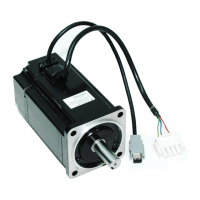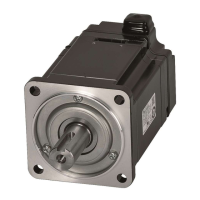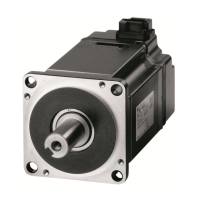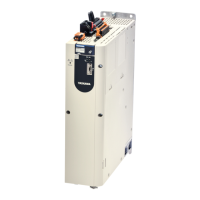6.1.3 Signal Operation and Functions (Cont'd)
(4) Overtravel LS (P-OT, N-OT)
0 When P or N-OT signal operates, speed reference in the moving direction is forced
to be O. (Motor stops at maximumdeceleration rate during operation.)
Relation between reference direction, motor rotating direction and P-ONor N-OT
Signal.
Parameter Reference Direction Motor Rotating Effective
14bO (Ref Data Polarity) Direction OTSignal
0 + Forward(CCW) P-OT
(Standard)
- Reverse(CW) N-OT
1 + Reverse(CW) P-OT
(Reverse
Connection) - Forward(CCW) N-OT
® When P-ON and N-OT signal are not used, set parameter 19 bO : 1.
Q After P-OT or N-OT signal is detected, there is a 4ms lag time at maximum until
braking is actually applied. Additionally, there is a braking time until stop.
WhenLS is set, these points must be considered.
1
(P-OT OR_
OT SIGNAL \N-OT ! ] OT DETECTION
1_ _! LAG TIME (MAX, 4ms)
!
SPEED [
l
!
(5) LS related to zero-point return (homing) [DEC, STP]
Refer to the zero-point return (homing) mode described in Par. 6.2.3 (l)(d).
(6) Proportional operation reference [PCON]
Speed loop control mode is changed from PI operation to P operation by turning on this
signal, and servo rigidity is reduced.
- 100 --

